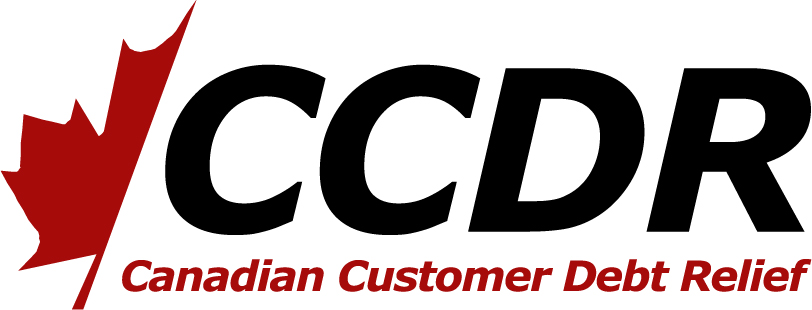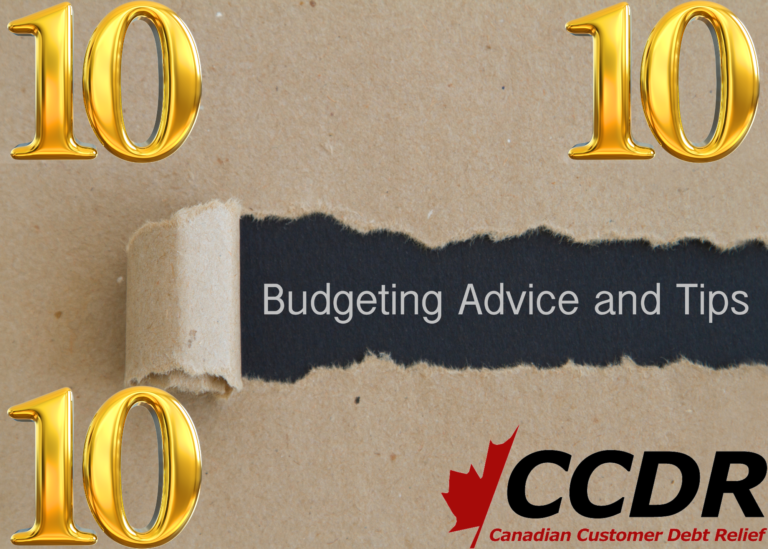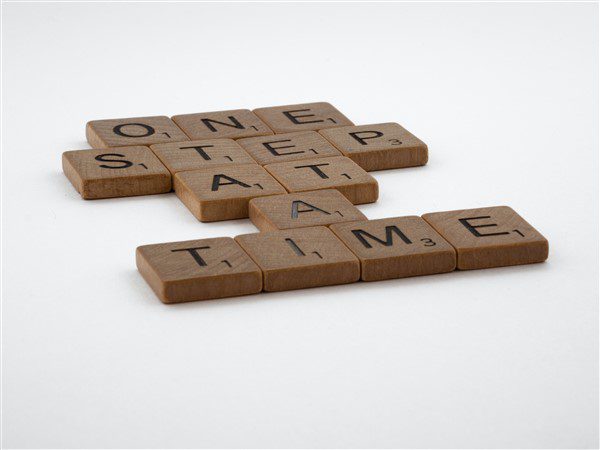Inflation
10 Tips for Maintaining a Healthy Budget at Home
Maintaining a healthy budget at home has become more critical today, where everything seems to be getting expensive daily. As a result, we have to be more mindful of our finances and keep our expenses in check. This article will provide ten practical tips for maintaining a healthy budget at home.
Create a budget plan
Creating a budget plan is the first step in maintaining a healthy home budget. This will help you keep track of your expenses and identify areas where you can cut down your costs. Next, list your monthly income and expenses, including your bills, groceries, and other miscellaneous costs.
Cut down on unnecessary expenses
Once you have created your budget plan, it’s time to cut down on unnecessary expenses. This includes dining out, buying clothes you don’t need, and subscription services you rarely use. Instead, focus on spending on essential items and prioritize your expenses accordingly.
Plan your meals in advance
Planning your meals can help you save significant money. For example, list the groceries you need for the week and avoid impulse purchases. Additionally, you can opt for budget-friendly meals and make use of leftovers.
Avoid unnecessary debt
Avoid taking on unnecessary debt and always pay your bills on time. This will help you avoid late fees and penalties, which can add up to a significant amount over time. In addition, if you have existing debt, pay it off as soon as possible to avoid accruing additional interest charges.
Reduce energy consumption
Reducing your energy consumption can help you save significant money on your utility bills. You can do this by turning off lights and appliances when not in use, using energy-efficient light bulbs, and reducing water usage.
Consider refinancing your mortgage
If you have a mortgage, consider refinancing it to a lower interest rate. This can help you save on monthly mortgage payments and free up extra cash for other expenses.
Find ways to earn extra income
Finding ways to earn extra income can also help you maintain a healthy budget at home. For example, you can take on a part-time or freelancing job, sell unwanted items online, or offer your skills and services to others.
Use coupons and discount codes
Using coupons and discount codes can help you save money on your purchases. Look for online deals and coupon codes before purchasing, and take advantage of sales and promotional offers.
Invest in home maintenance
Investing in home maintenance can help you avoid costly repairs and replacements in the future. Regularly cleaning and maintaining your home appliances and systems can also help you save money on your utility bills.
Set financial goals
Finally, setting financial goals can help you stay motivated and focused on maintaining a healthy budget at home. Whether saving for a vacation or paying off debt, having a clear plan can help you prioritize your expenses and make smart financial decisions.
In conclusion, maintaining a healthy budget at home requires discipline, planning, and intelligent financial decisions. By following these tips, you can reduce your expenses, avoid unnecessary debt, and save money for the future.
Back to School in Canada on a budget in 2023
The back-to-school season is upon us, and that means it’s time to stock up on all the supplies you’ll need for your kids to get back into the swing of things. But if you’re like me, that can mean spending hundreds of dollars on basic items like notebooks and pencils — all while living in an expensive city where rent keeps going up. So how do parents who want their kids to get a great education without breaking the bank manage? Here are some tips that might help:
Take inventory of your supplies
The first thing you will have to do is take inventory of your supplies. Do you have everything that is going to be necessary for the school year? Are there any items that you need to buy or borrow from someone else? If so, make a list of these things so that it’s easier for you and your family members when shopping for them.
Once this step is done, organize them in a way that makes sense for you. For example: if all of your pencils are in one place and all of your notebooks are in another place, then keep them separated by color as well (blue pencils with blue notebooks). This way they’ll be easier to find when needed! If some students prefer using pens over pencils, then let them use their own method but still keep track of which item belongs where by labeling each one accordingly (e.g., “This is my pen.”/”This belongs here”). Remember not only does organization make things easier but also helps prevent losing anything important like keys or electronics during class time!!
Make a list and budget
Now that you’ve got a general idea of how much money to expect and where to find it, it’s time to make a list and budget.
First, make a list of everything you need for school. These could include:
- Textbooks
- School supplies (like pencils, paper, binders)
- Lunch money or snacks
Look for deals and coupons
- Check newspapers and magazines. Many newspapers have a section of coupons, so you can look for them every week at your local grocery store.
- Check online coupon sites. Websites like Groupon and Living Social are great places to find deals on everything from restaurants to beauty treatments to school supplies. If there’s a deal for anything that you need for back-to-school, it’s probably on one of these sites!
- Look for coupons on social media. It’s pretty common nowadays for companies to offer coupons through their social media channels—so if you see any companies that sell the types of things in which you’re interested (e., pens or notebooks), make sure to follow them so that they can keep you up-to-date with new offers as they come up!
- Look in store flyers: Many stores will send out flyers with all sorts of special offers in them! Keep an eye out for any sales or discounts that might be available during back-to-school season at stores like Staples and Walmart; often times these stores will have big sales right around August when kids start school again after summer vacation ends (this also works great since most schools start around September/October).
Conclusion
We hope that you have found our tips on back to school in Canada on a budget useful. While it can be expensive, there are plenty of ways to save money and still find everything you need for school. You just have to know where to look!
How Much Money do you need for retirement in Canada?
Retirement is something that few people think about in their 20s and 30s and a large segment of the population around 50 isn’t really sure what they need to do to fund their retirement years. While there are many variables that come into play, one way is to figure out approximately how much money you will need in retirement. A good rule of thumb is this: in today’s dollars, you will need a minimum $1 million dollars to comfortably retire in Canada. To get to $1 million at retirement, assuming you make $50,000 per year, you should try to save at least 15% per year (if you start in your early 20s); if you start later, say in your 30s, try saving closer to 20%. If it’s still early enough for you (say under 40), then saving closer to 25-30% per year would be better!
Retirement is something that few people think about in their 20s and 30s and a large segment of the population around 50 isn’t really sure what they need to do to fund their retirement years.
It’s important to remember that retirement is a long way off for most people. At this point in your life, you’re probably thinking about getting through the next day, let alone planning for retirement. But if it’s not on your radar yet, it will be soon. You’ll find yourself thinking about saving money with every paycheck or maybe even setting up an automatic transfer from your checking account into a savings account when each paycheck hits.
The earlier you start saving money for your future self (retirement), the more time it has to grow and compound into something significant by the time you retire. If you wait until later in life to start saving for retirement without any previous contributions, then expect to have less money at that time—which means fewer options available to help fund those years when they come around! So while there aren’t any hard deadlines or cutoff dates where once passed there’s no going back (unless we’re talking about investing in crypto-currencies here), there are definitely advantages if done sooner rather than later.
While there are many variables that come into play, one way is to figure out approximately how much money you will need in retirement.
While there are many variables that come into play, one way is to figure out approximately how much money you will need in retirement.
In order to determine this, you will need to know what your living expenses will be once you stop working full-time. This includes housing costs and utility bills as well as any medical expenses that may arise. You should also consider transportation costs if you plan on continuing with a car payment or other regular expenses such as insurance premiums or memberships for sports clubs or gyms (if applicable).
Once you have an idea of how much money is necessary for each month in retirement, multiply it by the number of months per year (12) and then divide by 12 again to get an annual amount needed per month:
A good rule of thumb is this: in today’s dollars, you will need a minimum $1 million dollars to comfortably retire in Canada.
The rule of thumb is to save 15-20% of your income. The more you can save, the less likely you will need to worry about how much money do I need for retirement in Canada. If you are saving this amount every month, even if it’s small, then it adds up over time. You should also think about investing that money in ways that will grow and eventually make enough interest so that you can live off of the investment alone.
If we follow those steps and invest properly, then a good rule of thumb is this: in today’s dollars, you will need a minimum $1 million dollars to comfortably retire in Canada (and maybe even more depending on where).
To get to $1 million at retirement, assuming you make $50,000 per year, you should try to save at least 15% per year (if you start in your early 20s); if you start later, say in your 30s, try saving closer to 20%.
To get to $1 million at retirement, assuming you make $50,000 per year, you should try to save at least 15% per year (if you start in your early 20s); if you start later, say in your 30s, try saving closer to 20%.
For example: If a person is saving 15% of their income for the next 40 years and earns a 5% annual return on their investments (after fees), they’ll be able easily reach their goal. If that same person were only earning 2% instead of 5%, they would have to save as much as 22%.
Now let’s say that after 50 years of work and saving up an average of just over $1 million dollars (which is not unreasonable given how high house prices can be), we want our money invested so that it will grow over time while providing some income each month.
If you are entering your 40s with just a few thousand in savings, don’t worry too much – it’s better late than never! You can still save 15-20% of your paycheque each year and after 10 years, it will add up very nicely!
If you are entering your 40s with just a few thousand in savings, don’t worry too much – it’s better late than never! You can still save 15-20% of your paycheque each year and after 10 years, it will add up very nicely!
In fact, if you have been making steady contributions to your RRSP over the past 10 years (and have not withdrawn any money), then I would bet that you have more than enough assets to retire tomorrow. Let’s say that at age 45, your assets total $200k in stocks and bonds. Assuming an annual return of 5%, this would grow to $638k by age 55. If we assume that all these funds are invested conservatively (as opposed to taking on more risk) then at age 55 this portfolio could generate income of 8% per year ($52k). This means that even though our hypothetical investor has saved only $200k over the past decade (and did not take any withdrawals from their RRSPs), they could now retire comfortably at 55 without ever having contributed another cent!
Conclusion
After looking at the numbers and how much money you need for retirement, it is clear that if you want to retire comfortably, then you need to start planning early in life. A good rule of thumb is this: in today’s dollars, you will need a minimum $1 million dollars to comfortably retire in Canada. To get there at retirement age (average 65 years old), assuming your income doubles each year due to inflation, then it will take 10 years to save up enough money if you start saving 15% per year; if starting later than 30 years old then 20% per year would be necessary. If entering into your 40s with just a few thousand dollars saved up – don’t worry too much! You can still save 15-20% of your paycheque each year and after 10 years it adds up very nicely!
Budgeting for interest rate hikes in Canada
Rising interest rates are a concern for many Canadians. Although the current low-interest environment has allowed many Canadians to take on debt and build up assets, you must be aware of the potential downsides. Rising interest rates could jeopardize your finances if you’re a homeowner with a mortgage or an investment property with a HELOC. If you have debts with variable interest rates (such as lines of credit), higher borrowing costs could lead to higher payments and less cash flow. Even those who don’t carry any debt should keep an eye on the trend when planning their budgets – because even if you can pay off your loans early or refinance them at lower rates later down the road, being prepared will help keep more money in your pocket over time.
Rising interest rates can have dramatic effects on household budgets.
A good percentage of Canadians have mortgages. As you might expect, rising interest rates affect mortgage payments. This can mean monthly costs for homeowners, who may also face higher property taxes and utilities. Rising interest rates also affect other types of debt, such as car loans and lines of credit (LOC), which are often used to finance big-ticket items like cars or renovations on a home.
How do rising interest rates further impact the family budget? But, first, let’s look at how they can affect household cash flow and wealth:
- Cash flow: When interest rates rise, it becomes more expensive to borrow money for all sorts of purposes—mostly because lenders will charge more for the privilege of lending out their funds at higher rates than before; this means that borrowers must pay back more over time to compensate them for taking on additional risk.* Wealth: If you’re saving money in an investment portfolio instead of paying down debt—known as “financial repression”—you’ll see greater returns when borrowing costs rise.*
Household cash flow is not keeping pace with debt.
If you’re a homeowner, one of the best ways to prepare for interest rate hikes is to ensure your household cash flow keeps pace with debt. Over the past few years, low-interest rates have encouraged Canadians to carry more debt than ever. Unfortunately, however, many people aren’t saving enough money to pay off their debts when rates go up in the future. As a result, debt balances are increasing faster than income—which means it’s becoming harder for borrowers to pay back what they owe on their loans without taking on even more debt!
Cash-flow vs. Debt-Flow
A good rule of thumb for managing your finances is that if there’s no money coming into your account each month after paying bills and expenses (such as rent), you shouldn’t be spending any money (or going into further debt). Many Canadians have ignored this simple principle over the past decade because they’ve been able to keep up with their payments through low-cost borrowing options like payday loans or high-interest credit cards instead of saving up enough cash flow beforehand through budgeting efforts such as cutting down expenses or increasing income streams through side hustles such as starting an online business at home (eBay selling/Amazon FBA).
Higher interest rates may force house sales.
Suppose you’re one of the many Canadians who have taken advantage of low-interest rates to buy a house. In that case, it’s essential to understand how higher rates might impact your financial situation.
If rates go up, your monthly payments could also increase. To make sure you can afford these costs, it’s essential to set aside enough monthly money. If you don’t have enough savings or investments, consider using some of your home equity as a backstop against rising mortgage payments.
If increases in your income or assets can’t offset higher borrowing costs, they may force some homeowners into selling their homes and renting instead—and we could see a spike in Canadian real estate prices!
Rising rates and wealth effect.
When it comes to interest rate hikes, a few key factors impact the “wealth effect”—the change in consumer spending as a result of changes in the value of their assets. First, the wealth effect is strongest for people who have a lot of their wealth tied up in their homes: if interest rates go down, they can refinance at a lower rate and spend less on mortgage payments; if rates go up, they may be able to take equity out of their home and use it for other purposes.
The wealth effect will also be affected by what type of investments Canadians choose to make with any extra cash after paying down debts (or taking out more debt). If you invest your money conservatively (e.g., deposits), then rising interest rates will not affect how much you spend overall because the amount you get from deposits won’t change much over time either. On the other hand, if you invest aggressively (e
What should we do?
Here are some tips to help you plan for interest rate hikes:
- Understand your financial situation. Take a good look at your current debt, and make sure that the most important things (like rent and food) are covered before making any rash decisions. Then, look at your income and expenses to accurately budget for a potential rise in interest rates.
- Ask yourself whether or not you’re ready for higher interest rates. If not, start making changes now! It’s never too early to start planning for the future.
Conclusion
The best way to prepare is by budgeting for higher costs and investing in financial literacy. This way, you will be prepared when it comes time to make decisions about your household finances.
Are you in trouble with your debt load?
Getting out of debt can feel like an impossible task. But it’s not. With the right information, guidance, and support, you can get out of debt faster than you think. The trick is knowing where to start. You might be surprised to learn that debt isn’t always bad—in fact, it can be helpful when used correctly. You just need to make sure that your debts are manageable and affordable so they don’t keep piling up on top of each other like a house of cards ready to collapse at any moment (which happens more often than you’d think). In this guide we’ll walk through what getting into debt looks like and how you can use these tips to get back on track with your finances!
When you’re in debt, it can feel like you’re never going to get out.
When you’re in debt, it can feel like you’re never going to get out. You might have the same thought I did: “I’ll never be able to pay off all this debt. I will always have debt.” The stress of living like this is intense, and as a result, so is the sense of being trapped—a feeling that’s only exacerbated by financial challenges such as low or unstable income and unemployment.
If your debt is causing stress and negatively affecting your life in other ways (for example, by limiting what you can do), then something has to change. Here are some ways to help:
- Get back on track with budgeting
- Start saving for the future
Your debt-to-income ratio will tell you how much of your income goes toward paying off your debts.
Your debt-to-income ratio is a way to measure your financial health. It’s the percentage of your income that goes toward paying off all of your debts. The debt-to-income ratio is calculated by dividing a list of outstanding debts by total household income. For example, if you have $20,000 in credit card debt—and annual household income is $50,000—your debt-to-income ratio would be 40 percent (20 / 50).
The higher the number on this scale, the more at risk you are for experiencing financial trouble down the road. If your ratio is too high (e.g., above 40 percent), it may mean that you can’t afford to take on any new loans or repay existing ones without getting deeper into trouble with debt collectors and creditors who want their money back immediately!
Understand the way that debt works and how it fits into your life.
The first step toward getting yourself out of debt is to understand how debt works in your life. Debt isn’t a bad thing, and it doesn’t always have to be bad for you. It can actually be a great tool for optimizing your finances and helping you achieve the things that are important to you. For example, if buying a house is something you want in the next few years, taking on some mortgage debt could be an excellent way to get there faster—assuming that the value of what’s being purchased outweighs the cost of borrowing money at interest rates higher than those available through other investments.
However, there are times when taking on too much debt isn’t wise at all; this usually happens when people don’t understand or respect their own limitations with regard to paying off loans over time (e.g., credit card balances). If this sounds like something that describes your own situation right now then please keep reading!
Know what happens if you don’t pay your bills on time.
You may think that if you skip a payment or two, it won’t matter. But if you don’t pay your bills on time, there are consequences. You could lose your credit score and find it hard to get loans in the future. Your creditor can also sue you for payment and send the case to collections if they decide not to pursue legal action themselves. These actions can make it difficult for you to get approved for new credit cards or loans in the future because they’ll lower your credit score even further.
There are many options for paying off debt and saving money, but not all of them work for everyone.
There are many options for paying off debt and saving money, but not all of them work for everyone. You can pay off debt in a variety of ways, including:
- paying off your credit card with another credit card
- using a cash back rewards credit card to save money on everyday purchases like groceries
- taking out a personal loan or line of credit to pay down your debt faster (but this can be risky if you’re carrying too much debt)
If you need help deciding how you want to pay your debts, consider getting advice from an expert at CCDR.
If you’re struggling with debt, try these tips.
If you’re in trouble with your debt load, try these tips:
- Pay off the debt with the lowest balance first and roll that payment toward the next largest the following month.
- Make a budget and stick to it. If you don’t know where your money is going, you might be surprised by how much of it is going toward unnecessary spending—like those daily coffee runs or weekly happy hour outings that seem harmless but really add up over time.
With enough knowledge and support, getting out of debt can be less scary than it seems at first.
If you’re feeling overwhelmed by the idea of getting out of debt, don’t worry. With enough knowledge and support, getting out of debt can be less scary than it seems at first.
- You can do it yourself: If you have a basic understanding of how to manage money and create a budget, then self-management might be an option for your situation.
- You can get help from a professional at CCDR: A professional can help set up an action plan and provide guidance along the way as well as assist with difficult decisions or unexpected challenges along the way. While this type of assistance is often more expensive than self-help options, having someone else involved who understands what needs to happen may feel more reassuring during times when things seem overwhelming (and they will!).
Getting out of debt is a tough process, but it’s also a rewarding one. If you’ve managed to get this far and read this article about the best ways to save money and pay off debt, then you’re already taking steps toward your financial goals. The next step is simple: follow our advice! Keep in mind that there are many different approaches to spending less and saving more—whether it’s cutting down on eating out or finding creative ways around paying bills late. No matter what method works best for you personally, keep working towards those goals until they become habits instead of just resolutions by using our tips above as guidance along the way!
Budgeting During Inflation in Canada
Introduction
There are many reasons why inflation occurs. Food and fuel prices are often considered the biggest culprits, but the average consumer’s spending habits can play a big role as well. Inflation is inevitable and there’s no way to stop it, but that doesn’t mean you have to spend more money than you need to just because prices go up over time. It’s important to be prepared for inflation as best you can so that it doesn’t hurt your budget too much or even worse, put you into debt!
Being prepared
- Being prepared: The most important thing you can do is to draw up a budget and plan for the future. As inflation creeps in, you want to make sure that your income keeps pace with it and doesn’t lag behind. This means planning ahead so that you can save more money when things are good, but also being flexible enough so that when things go awry (as they inevitably will), there’s still some cash flow left over each month.
- Saving enough money: If your income is steady, then saving is easy—just set aside what’s left at the end of each month for savings or investments and keep doing it until it becomes habit! However, if your income varies from month-to-month or week-to-week (sometimes even day-to-day), then saving may be more difficult because sometimes there won’t be any money left over after covering expenses like rent/mortgage payments or groceries; this is where having an emergency fund comes in handy!
Look at your mortgage
If you have a fixed-rate mortgage, consider refinancing if rates drop. The longer the term of your mortgage, the better it is to refinance at lower rates. If you’re already in a variable rate, look into getting a fixed or capped rate that matches your current mortgage if rates drop.
Get ahead of things
Inflation is a tricky beast. It can sneak up on you without you even realizing it, and before you know it your budget is in shambles. It’s important to stay on top of inflation so that your financial situation doesn’t fall apart!
- Look at your budget: If you’ve done a good job of tracking where your money goes each month, then this may be a breeze for you. If not, we recommend using an app like Mint or Quicken to track expenses for at least two months to get a better idea of how much money comes in versus how much goes out. Once that’s complete, create categories where appropriate and try to come up with some creative solutions if there are any red flags (for example: “Eating Out” might be too high).
- Look at other areas of spending: Are there any areas where we could cut back? Where are our priorities? Is there anything else we could eliminate completely? This step will likely take some time—and possibly some tears—but setting aside personal luxuries means that when inflation hits hard again next year (or sooner), we’ll still have enough saved up for those rainy days.*
Save on food
If you are looking to save on food, there are some easy ways that you can do this. The first option is to buy in bulk. This will allow you to get a lot of the same product at once and then store it for later use. It may also be more cost effective than buying smaller quantities throughout the month or week.
Another good way to save money is by looking for sales and coupons from various stores that sell similar products, particularly grocery stores and supermarkets. You can also look for cheaper alternatives like lower quality items or cheaper brands than what you normally buy as well as cheaper stores and meal options like eating out less often or cooking your meals at home instead of ordering out on nights when possible (which will save even more money).
Buy cheaper brands
There are many ways of lowering your grocery bill without sacrificing quality. Some options are as simple as buying generic brands, while others might require some planning and preparation. Here’s a list of tips to keep in mind when shopping for groceries:
- Buy store brands instead of name-brand products
- Buy in bulk when possible (e.g., at Costco)
- Buy in season or on sale
- Buy on Amazon (if you have a Prime membership)
Use coupons
Coupons are one of the easiest ways to save money on your groceries, and they’re also a great way to save money on other items you purchase. You can find coupons in newspapers, magazines, online and in stores. Coupons typically allow you to buy an item at a lower cost than normal price; however some coupons may even include free products!
The following are some examples of how you can use coupons:
- Use them as currency for trading within your community (e.g., swapping clothes with friends).
- Give them away as gifts for birthdays or holidays.* Don’t throw away expired ones! They still have value!
Cut back on eating out
Eating out is a luxury, so you should cut back on it when times are tough. The best way to do this is to eat at home more often and only eat out less often. If you do decide to go out, try eating at cheaper restaurants or even fast food chains like McDonald’s or Burger King. You’ll save yourself some money and get some good value for your buck.
Buy generic brands
- Generic brands are usually cheaper
- Generic brands are usually the same quality as brand names
- Generic brands are usually available at the same stores as brand names
Take stock of your bills
To start, list all of the monthly bills you pay. These include things like rent or mortgage payments, car insurance and gas costs, grocery bills and utility bills (water/electricity). Next, figure out how much money you spend on each bill per month, per year and even per week/day/hour if possible.
Now that you have a clear picture of how much money is going out every month, we can begin to identify potential areas where we can cut back on spending.
Reconsider utilities
One of the first things you should do as a budgeter is to look at your utility bills. Look for anything that can be done to lower your cost, whether it’s changing providers, using less electricity or water, or switching from heating oil to natural gas. If you find yourself driving long distances every day for work and need to cut back on gas usage, consider taking public transportation instead of driving yourself (or maybe even getting rid of one car altogether).
Inflation is inevitable, but that doesn’t mean you can’t plan ahead.
Inflation is a natural process that occurs when the supply of money grows faster than the demand for it. When this happens, prices rise and the purchasing power of your money decreases.
Inflation does not happen overnight; it takes time for inflation to increase from 0% to 2%. And it’s important to remember that inflation is not just something that affects you and me as consumers in our day-to-day lives, but also affects businesses who need to adjust their prices accordingly in order to stay competitive in the market place.
However—just because we know what causes inflation doesn’t mean we have control over how much it will occur or when! Inflation can be very unpredictable so we all have a role here: stay informed about current economic news so you can plan ahead accordingly!
Conclusion
With inflation being a fact of life, it’s important that you take steps to plan for it. By being prepared and looking at ways in which you can cut back on spending when prices go up, you can avoid getting caught off guard when your grocery bill suddenly goes up or electricity rates increase without warning.






